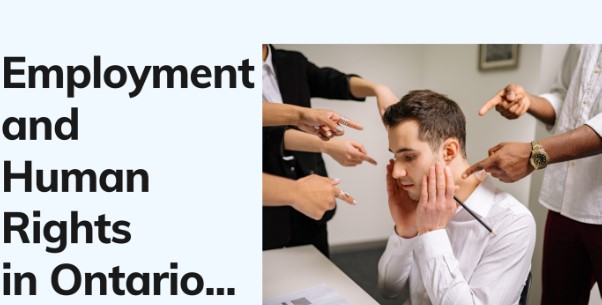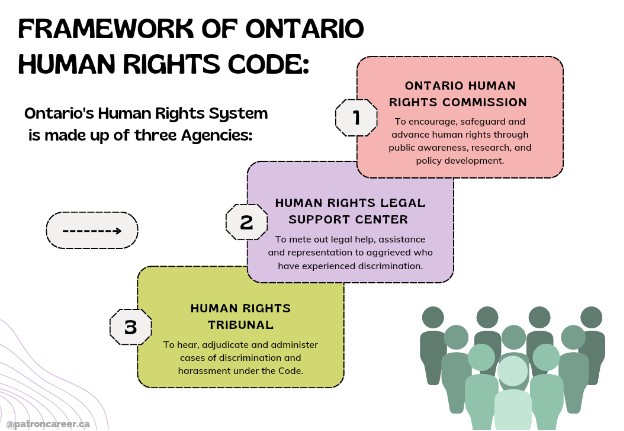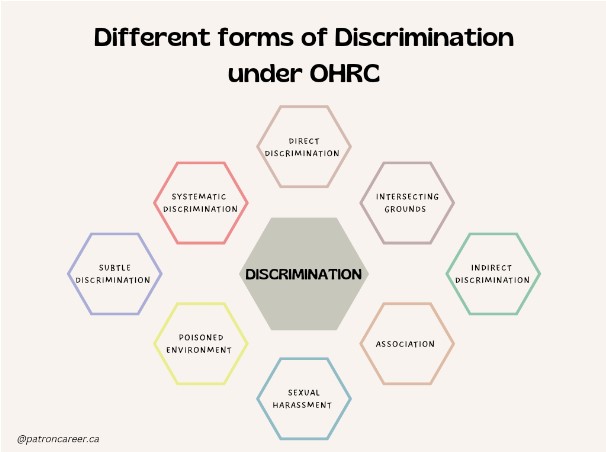
Plastic Industry Canada
7 October, 2022
Patron Career Staffing firmly believes in adopting a tailored approach to meet temporary and permanent recruitment needs. We safeguard the interest of our clients by finding such workers who are knowledgeable and reliable.
About UsNeed help? Make a Call
32 Dundas Street East Unit A, L5A1W2

Employers, more now than ever, need to reassess the standards they have set in the workplace to purport a harassment and discrimination-free work environment.
Even so, it is the employer's responsibility to ensure that such guidelines and rules are legally complied with and abided by their fellow counterparts and employees to limit the strokes of any costly litigations. It is also preeminent for all businesses even small ventures to discern the obligations imposed by their state’s employment laws.
With the acknowledgment that there exists a plethora of employment laws in Ontario alone, we focus to shed a light on the Ontario Human Rights Code (OHRC) which solely deals with discrimination against workers in the workplace.
The OHRC, being the first law of its kind, is a statutory legislation advancing human rights conduct in the workplace. It is a provincial law that becomes apparent once you are hired as an employee. Both the employer and the employee cannot rescind or ‘contract out' the provisions of the “Code”. The employers are regulated and bound by statutory obligations which they cannot throw off.

The OHRC aims to safeguard employees’ interests by providing them with equal rights, and opportunities irrespective of their sex, disability, creed, ethnic origin, ancestry, origin, and family status. In toto, there are around 16 grounds enlisted in the code, which are known as the ‘Protected Grounds’.
Employers are forbidden to treat their workers below the belt or discriminate amongst them on the bases of such grounds. There exist a few exceptions to the above rules. Such as, airline services are permitted to hire people with good eyesight as pilots. Minimum ages for voting and driving are exempted. Such practices do not render them illegal or against the statute.
The code is essentially for everyone. It protects individuals against unequal treatment or harassment in several social areas, including:
Such treatment must be based on the above-protected grounds and involve an area covered by the Code because not all unfair treatment and harassment are covered by the code.
Such treatment must be based on the above-protected grounds and involve an area covered by the Code because not all unfair treatment and harassment are covered by the code.
As an employer, it is expedient to understand that even nicety, nuanced acts, micro aggressions, and exclusionary behaviors such as derogatory racial slights at the targeted person in the workplace, can amount to discrimination under the code.
The following aspects of the workplace and employment relationships are protected:
The applicability of the OHRC for protection from discrimination is quite wide.
. EMPLOYEES- It practically includes a broad interpretation of the term ‘employee’. The code does not define ‘employee’. So it encompasses all types of workers- temporary, permanent, casual staff, contract-based employees, indentured workers, jobbing employees, and other persons in such a world of work who are working to gain experience, such as apprentices.
One distinct feature in the code is that it shall also apply to people working after hours or when they are not virtually present in the workplace. The code doesn’t fail to give rights to people hired in or around a person’s home, such as nannies, cooks, gardeners, and cleaners.
. TEMPORARY & CASUAL WORKERS - temporary staff with low earnings, in unskilled jobs are also protected.
Worthwhile is that people employed through ‘Employment or Staffing Agencies’ have been recognized and given equal protection before the law. (Section III-4e).
. PERSONNEL UNDER CONTRACT- any contract-based employment and contractual relationships, such as one between a hairdresser and a client are distinctively protected under the code.
. VOLUNTEERS & UNPAID WORKERS- many people join work to gain some form of experience as a medium to secure wages, for other people who are underemployed owing to grounds such as their age and race. Interns and apprentices often volunteer to gain the specific experience they require to overcome discriminatory hindrances: “Canadian Work Experience”.
. PROBATIONARY EMPLOYEES- such workers should also be subjected to the same rights and fair humane treatment as any other employee in the workplace.
. TRADE UNION MEMBERS- individuals who are members of vocational associations, trade unions, and self-governing professions are recognized under a distinct social area.
Undefined in the OHRC, discrimination usually means and includes:

Intention and motive are not given much importance than the impact of the person’s behavior. If any right of an employee is infringed based on any of the above grounds mentioned, then the aggrieved can file a human rights application with the Ontario human rights tribunal against the perceived offender. The deadline to act on it is set as one year from the last discriminatory event or conduct.
Section 8 of the code protects employees from reprisal. Reprisal is any sort of threat or action by an employer, intended as means of retaliation for filing an application or reporting of rights infringed under the Code.
If your employer penalizes or threatens you for taking action against him, you can still file an additional claim for reprisal and safeguard yourself from any such brutality.
Should you ever suffer injustice, harassment, racism, or conflict at work, bring it up to your supervisor, and if the matter does not resolve you can always file a complaint with the HRTO. You can get advanced help from the human rights legal support center.
